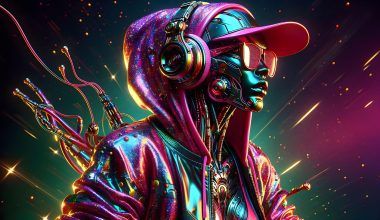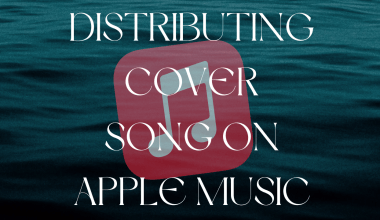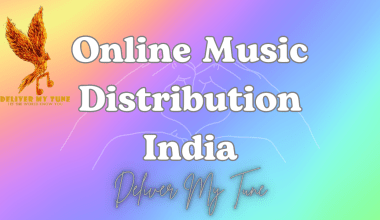As the music industry becomes increasingly digital, understanding music distribution costs is crucial for any artist. From getting your music onto Spotify to mastering your tracks for global release, the distribution process comes with various expenses. These costs are vital to budgeting your music career effectively.
This comprehensive guide will break down everything about the cost of music distribution, including platform fees, royalty splits, and budgeting strategies. By the end, you’ll have the tools to choose the best distribution service for your needs while minimizing unnecessary expenses.
What is Music Distribution?
Music distribution refers to the process of making your music available to listeners on platforms like Spotify, Apple Music, YouTube Music, and Amazon Music. With over 100 music streaming services globally, distributing your tracks ensures your music reaches audiences worldwide.
Gone are the days of physical CD sales dominating the market. Today, digital distribution handles metadata, encoding, licensing, and even promotional tools. These services allow independent artists to compete with major labels in getting their music heard.
Why Understanding Costs is Important
For independent artists, the cost of music distribution can make or break a release. If you’re an artist with limited resources, choosing the wrong distributor could mean losing revenue or spending excessively on unnecessary add-ons. Here’s why understanding music distribution costs matters:
- Budget Management: Proper planning ensures you allocate funds to other essentials like marketing and production.
- Revenue Retention: Avoid platforms with high royalty cuts to maximize your earnings.
- Global Reach: Knowing costs upfront helps you decide whether international distribution is feasible.
Types of Music Distribution Costs
Music distribution costs vary depending on the service provider and the specific features you choose. Here’s a breakdown of the most common expenses:
a) Upfront Fees
Upfront fees are the initial costs you pay to distribute your music. This can be per track, album, or subscription-based. Common examples include:
- Single Track Distribution: ₹999 – ₹1999
- Album Distribution: ₹5999 – ₹9999
b) Royalty Splits
Many distributors take a percentage of your earnings. For example, some platforms let you retain 85% of royalties, while others may take up to 50%.
c) Annual Subscriptions
Services like DistroKid charge an annual fee for unlimited releases, which can be beneficial for prolific artists.
d) Optional Add-Ons
Some distributors offer additional services like playlist pitching, priority distribution, and custom UPC/ISRC codes for a fee.
4. Popular Music Distribution Platforms and Pricing
Deliver My Tune
- Single Track Cost: ₹1999
- Album Cost: ₹5999
- Royalty Split: 70% for artists; 85% for label packages.
- Key Feature: Lifetime validity with no recurring fees.
DistroKid
- Subscription Model: $19.99 annually (₹1660 approx).
- Royalty Split: 100% to artists.
- Key Feature: Unlimited releases under one subscription.
TuneCore
- Single Track Cost: $9.99 per year (₹830 approx).
- Album Cost: $29.99 per year (₹2490 approx).
- Royalty Split: 100% to artists.
CD Baby
- Single Track Cost: $9.95 (₹825 approx).
- Album Cost: $49 (₹4000 approx).
- Royalty Split: 9% retained by CD Baby.
Amuse
- Free Plan: Basic distribution at no cost.
- Pro Plan: $59.99 annually (₹5000 approx).
- Royalty Split: 100% for Pro users.
These platforms cater to various artist needs, from beginners looking for cost-effective solutions to established acts seeking premium services.
While upfront costs are easy to identify, many platforms have hidden charges. Watch out for the following:
a) UPC/ISRC Code Charges
If your chosen plan doesn’t include codes for free, you may have to pay extra.
b) Withdrawal Fees
Some distributors charge processing fees when you withdraw your royalties.
c) Priority Release Fees
Platforms may charge more for faster release times.
d) Regional Add-On Costs
Expanding your reach to specific regions, like China or Africa, may require additional fees.
Free or low-cost platforms often take a higher percentage of your earnings without highlighting it upfront.
Royalty Splits and Their Impact on Artists
Royalty splits dictate how much money you keep from your music’s earnings. Here’s a practical example:
- Scenario A: Your track earns ₹10,000 in streaming revenue.
- Platform A (15% royalty cut): You receive ₹8500.
- Platform B (30% royalty cut): You receive ₹7000.
Choosing a platform with low or no royalty cuts is ideal if you expect higher revenue. However, if you’re just starting, platforms offering free distribution with royalty cuts may suit your needs.
Tips for Reducing Music Distribution Costs
a) Choose the Right Plan
Select a distribution model that matches your release frequency. For instance, annual plans like DistroKid work best for prolific artists.
b) Bundle Services
Many distributors offer packages that include mastering, playlist pitching, or marketing at a discounted rate.
c) Leverage Free Tools
Use platforms like Spotify for Artists or YouTube Analytics for marketing insights instead of paid services.
d) Monitor Performance
Track your streams and earnings to evaluate the ROI of your chosen distributor.
e) DIY Promotions
Handle social media marketing yourself to save on promotional costs.
Common Myths About Music Distribution Costs
Myth 1: Free Distribution Services Are the Best
While free platforms save upfront costs, they may take a significant cut of your earnings or limit your reach.
Myth 2: All Platforms Are the Same
Each distributor offers unique features. Research thoroughly to find the one that aligns with your goals.
Myth 3: Distribution Guarantees Success
Distribution is just the first step. Active promotion and marketing are crucial for your music to gain traction.
FAQs About Music Distribution Costs
1. How much does music distribution typically cost?
Costs range from ₹999 for single tracks to ₹9999 for albums, depending on the platform and plan.
2. Can I distribute music for free?
Yes, platforms like Amuse offer free distribution but with limited features.
3. Are royalty splits negotiable?
For most distributors, royalty splits are fixed. However, premium plans often allow higher retention.
4. Which platform is best for beginners?
Platforms with free plans or low upfront costs, like Amuse or CD Baby, are great for new artists.
5. What happens if I want to switch distributors?
You can switch, but it may involve reissuing ISRC codes and other licensing adjustments.
Conclusion
Understanding the nuances of music distribution costs can significantly impact your music career’s financial success. By choosing the right platform, avoiding hidden fees, and leveraging free tools, you can distribute your music effectively while minimizing expenses.
Whether you’re an emerging artist or an established name, investing time in understanding distribution services will ensure your music reaches global audiences without overspending.
Take the time to compare platforms like Deliver My Tune, DistroKid, and TuneCore to find the best fit for your needs. Remember, the right investment today can lead to higher returns tomorrow.
Related Articles:
For further reading, explore these related articles:
- Distributing a Cover Song
- 5 Music Myths You Need To Leave Behind
- Top 4 Ways to Find a Target Audience for Your Music
For additional resources on music marketing and distribution, visit Deliver My Tune.






